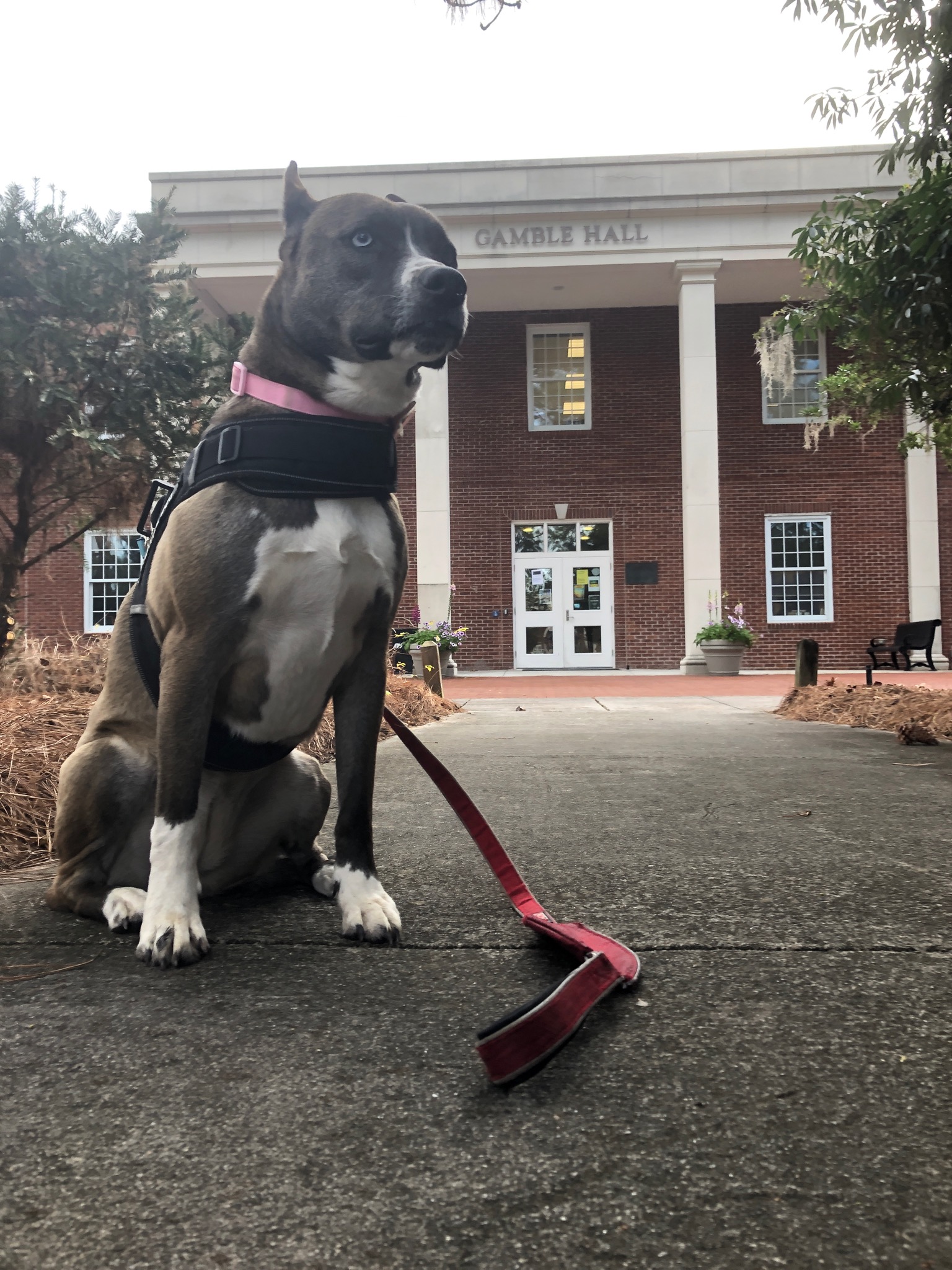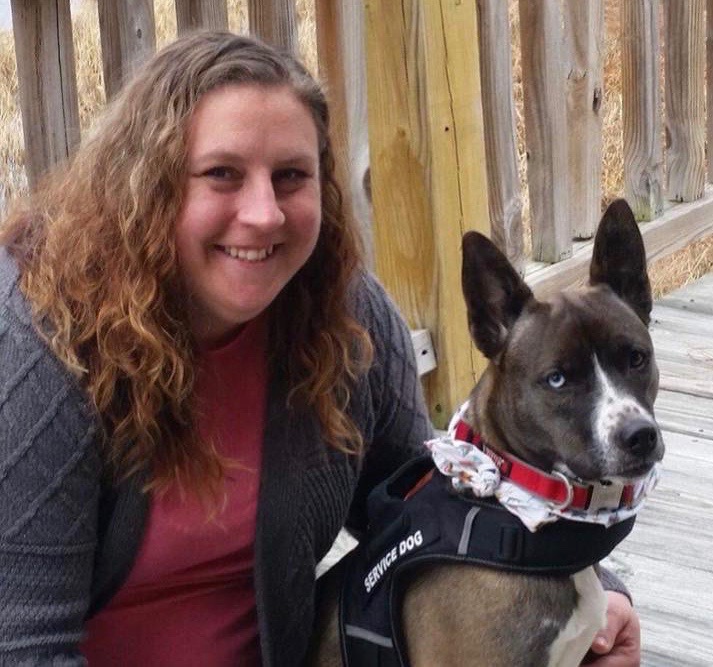Hannah Hanlon, Staff Writer

Casey Nash is a senior in Interdisciplinary Studies and minoring in Writing who is used to arousing people’s curiosity when she walks around campus with her dog, a pitsky (a pitbull-husky mix) known by several students and professors on campus as Zoey.
When first seeing the pair together, the question might arise: Is Zoey a service dog or an emotional support dog?
According to Nash, Zoey is both.
Specifically, Zoey is a service dog trained to assist with Post-Traumatic Stress Disorder (PTSD).
Nash, an Army Veteran of more than 10 years and recipient of a Purple Heart, suffered severe physical injuries twice during her deployments to Iraq, one from the blast of an IED. In a separate incident, a child suicide bomber killed Nash’s driver and injured Nash severely.
Nearly seven years later, the physical scars have healed. But the mental and emotional scars have not. This is where Zoey has become invaluable to her.
Zoey went with Nash to Jacksonville every other week for six weeks on the weekends for service dog training, specifically designed in PTSD training.
“That’s where she learned a lot of my emotional triggers…a lot of my emotional breakdowns,” said Nash. “We learned a lot together, what my emotional triggers actually were, and how to warn me before my anxiety levels got too high in situations where I did not want to be at.”
“She has been very helpful in keeping me cool and calm in environments that I do not want to be in, but I believe that she deserves a break and some relaxation time, so she is not always with me,” Nash said.

Not everyone is aware of the difference between service animals and emotional support dogs.
For one thing, service animals can only be a dog or a miniature horse, and they are covered regulated under the Americans with Disability Act (ADA). Service animals are allowed anywhere on campus.
An emotional support animal can be any personal pet that provides emotional comfort. These animals are allowed to be in housing under the protection of the Fair Housing Act (FHA).
While service animals cannot be refused or banned from classrooms or anywhere else on campus, emotional support animals are allowed in housing only, unless extra documentation is provided, according to Kelly Woodruff, Director of Student Accessibility Resource Center (SARC).
“There has been a significant increase in the past two years of emotional support animals on campus,” said Woodruff.
“There is some dispute regarding the diagnosed need for an emotional support animal being anecdotal vs. medically proven,” Woodruff said, “and there is a distinction between subjective benefits and objective diagnosis.”
“The biggest challenge for many individuals is understanding the difference between emotional support vs. service dogs,” said Ryan Heins, Director of Business Administration with University Housing.
While service animals are required to be professionally trained, emotional support animals are not. This can present a variety of challenges in regard to animal behavior. Liability insurance may also be a strong consideration in case of animal bites.
Nash faces challenges like making sure that she has easy and visible access to the nearest exit sites and making sure that Zoey is in a place where she can easily alert her when an emotional trigger is sensed.
“She alerts me by nudging me with her nose or placing her paw on me,” said Nash.
Other challenges experienced are people impulsively trying to pet the dog before asking.
Nash does not mind if people want to pet Zoey, but she prefers if permission is asked first. After all, Zoey is a working animal and when she is on the job, she needs to be focused at all times.
Another challenge is due to the general public not always understanding or being tolerant of an animal being in a store or in a classroom.
“People will say, ‘You just want to bring your pet with you,’” said Nash. Even though Nash considers Zoey as family, she is still a working animal who provides a needed service.
“Not every illness or injury is known…or seen,” said Nash with a rueful smile.






